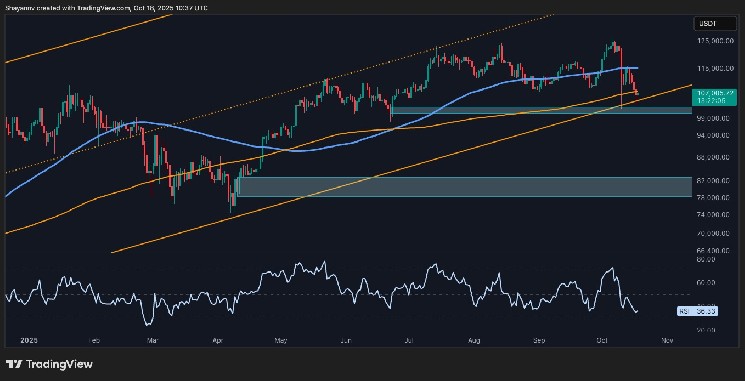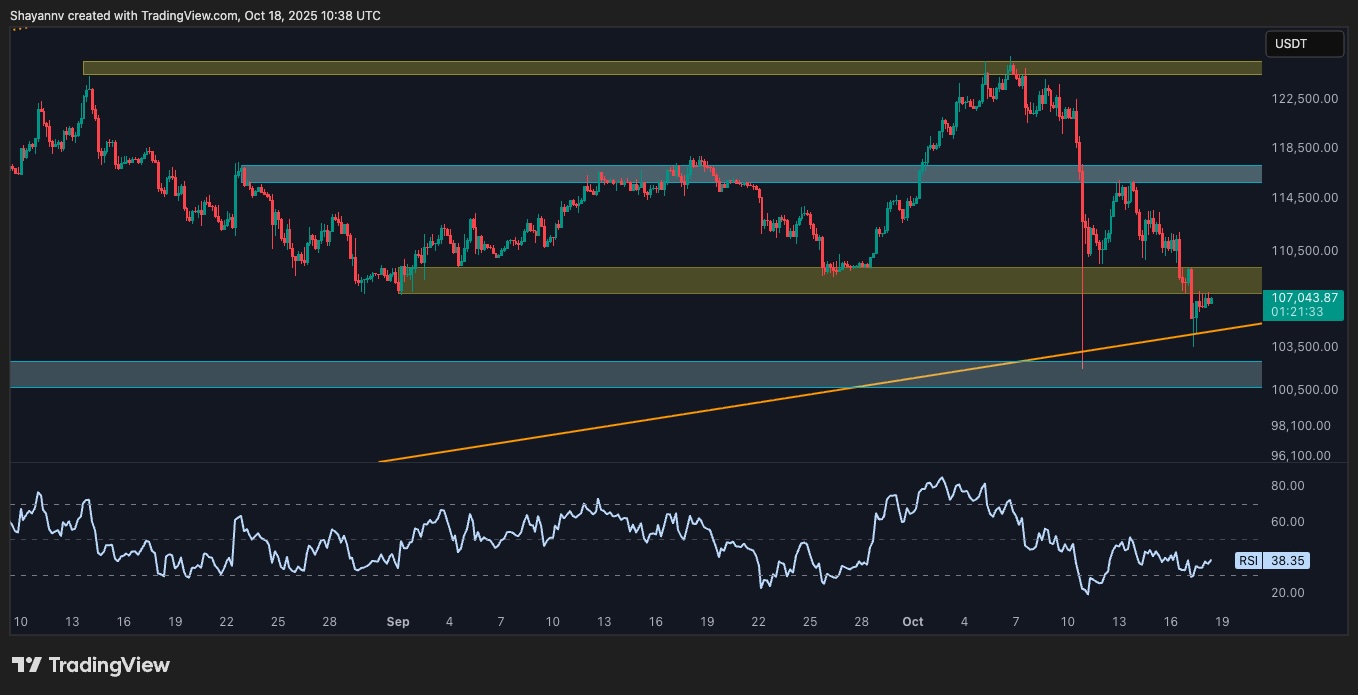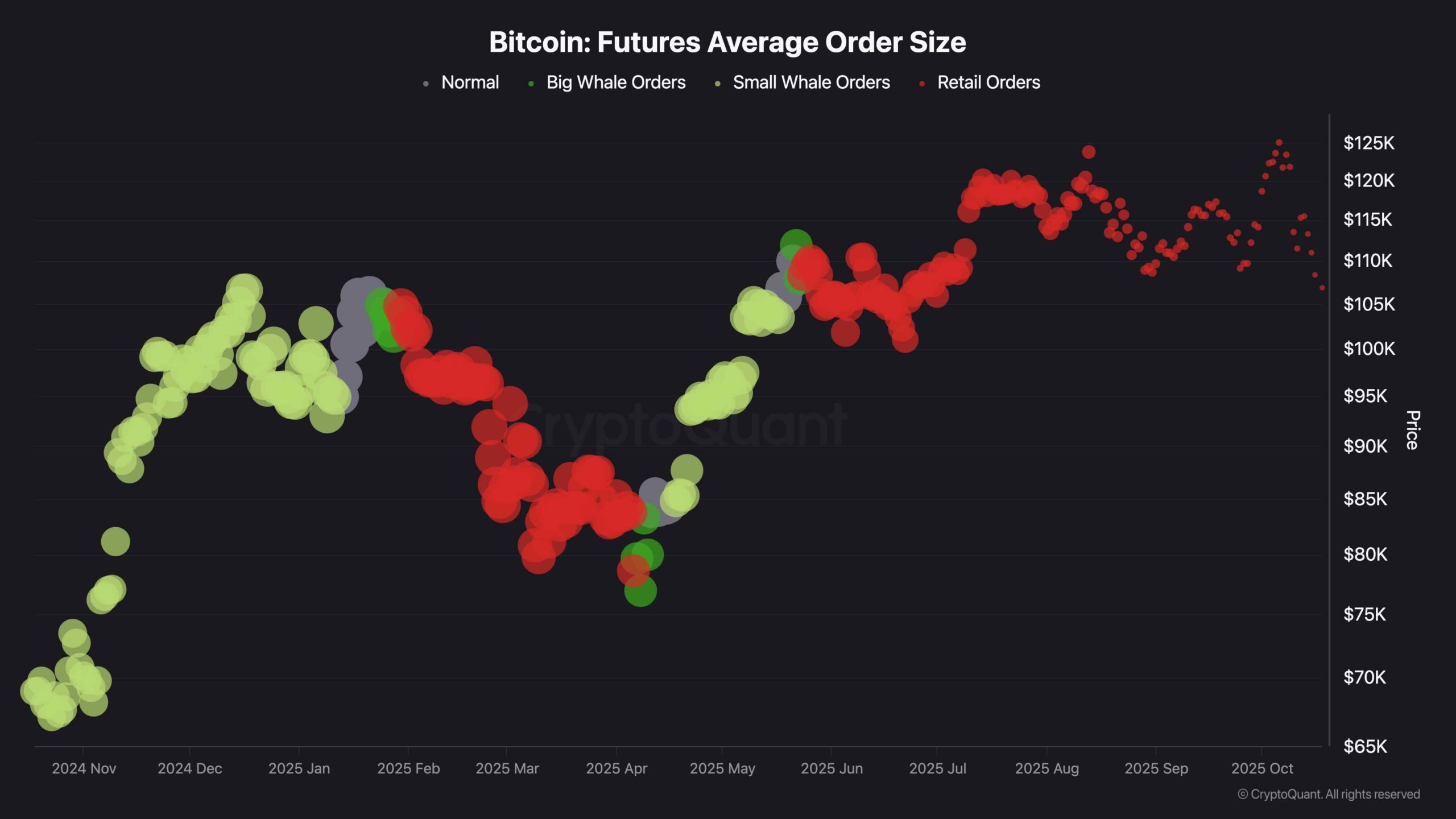Bitcoin continues its corrective move this week, falling from all-time highs and testing major trend lines and support levels. While the broader macro structure remains bullish, the near-term outlook suggests consolidation or an even deeper decline if buying momentum does not intervene soon.
technical analysis
Written by Shayan
daily chart
On the daily time frame, BTC has fallen below the 100-day moving average located at around $115,000, but is now located in a large ascending channel and the lower trendline of the important 200-day moving average. This area also coincides with the previous order block and serves as a major support.
However, the RSI remains below 40, clearly reflecting a loss of bullish momentum, and unless prices recover quickly, this trend line could be broken, opening the door to levels below the key $100,000 zone, and potentially shifting the overall market trend to a bearish one.

4 hour chart
Zooming in, it is clear that BTC has formed a minor base around $105,000 after breaking the $115,000 and $109,000 levels. The asset is struggling to regain its current resistance in the $108,000 to $109,000 zone. Also, although the RSI has rebounded slightly, it lacks momentum and remains at around 38.
The overall structure remains in favor of the bears in the near term unless a strong recovery to $110,000 and a subsequent rally to the lows materializes. Otherwise, sellers could push BTC into the $100,000 region or even lower.

sentiment analysis
futures average order size
Futures order size data shows a dramatic shift from whale activity to smaller retail-driven positions over the past few weeks. As prices began to correct in September, large whale orders began to disappear and were almost completely replaced by smaller retail trades.
This suggests smart money is moving away from leveraged positions and retail traders remain involved. This often occurs during trend exhaustion or the late stages of a bull market, and is a very worrying development.
This supports the idea that the recent decline was not caused by strong accumulation and increases the risk of further decline unless new institutional demand intervenes.



